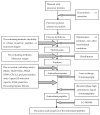The Structure-Activity Relationship of the Antioxidant Peptides from Natural Proteins
- PMID: 26771594
- PMCID: PMC6273900
- DOI: 10.3390/molecules21010072
The Structure-Activity Relationship of the Antioxidant Peptides from Natural Proteins
Abstract
Peptides derived from dietary proteins, have been reported to display significant antioxidant activity, which may exert notably beneficial effects in promoting human health and in food processing. Recently, much research has focused on the generation, separation, purification and identification of novel peptides from various protein sources. Some researchers have tried to discover the structural characteristics of antioxidant peptides in order to lessen or avoid the tedious and aimless work involving the ongoing generated peptide preparation schemes. This review aims to summarize the current knowledge on the relationship between the structural features of peptides and their antioxidant activities. The relationship between the structure of the precursor proteins and their abilities to release antioxidant fragments will also be summarized and inferred. The preparation methods and antioxidant capacity evaluation assays of peptides and a prediction scheme of quantitative structure-activity relationship (QSAR) will also be pointed out and discussed.
Keywords: antioxidant peptides; proteins; structure-activity relationship.
Conflict of interest statement
The author declares no conflict of interest.
Figures




References
-
- Montoya-Rodriguez A., de Mejia E.G. Pure peptides from amaranth (Amaranthus hypochondriacus) proteins inhibit LOX-1 receptor and cellular markers associated with atherosclerosis development in vitro. Food Res. Int. 2015 doi: 10.1016/j.foodres.2015.06.032. - DOI
-
- Samaranayaka A.G.P., Li-Chan E.C.Y. Food-derived peptidic antioxidants: A review of their production, assessment, and potential applications. J. Funct. Foods. 2011;3:229–254. doi: 10.1016/j.jff.2011.05.006. - DOI
-
- Dziuba J., Niklewicz M., Iwaniak I., Darewicz M., Minkiewicz P. Bioinformatic-aided prediction for release possibilities of bioactive peptides from plant proteins. Acta. Aliment. 2004;33:227–235. doi: 10.1556/AAlim.33.2004.3.3. - DOI
Publication types
MeSH terms
Substances
LinkOut - more resources
Full Text Sources
Other Literature Sources
Medical

